We occasionally link to goods offered by vendors to help the reader find relevant products. Some of these may be affiliate based, meaning we earn small commissions (at no additional cost to you) if items are purchased. Here is more about what we do.
How often do you use a saucepan when you’re cooking? And how often do you properly care for this crucial piece of cookware before, during, and after you use it?

Didn’t think about that until now? You might be doing more damage than you expect!
Let’s chat about how you can extend the life of this important piece of kitchen equipment.
A saucepan is a type of cookware designed for use on the range. It is characterized by its round shape, vertical sides, and single long handle.
It can be used for many types of food prep, but it’s the most useful for – you guessed it – preparing sauces and other liquids!
Like all kitchen tools and appliances, they require a certain amount of care to keep them performing properly.
Since there are so many different kinds of saucepans available, most manufacturers include instructions for proper use and care, which you should read carefully to fully understand your specific cookware.
But for those of us who often toss away the instructions – shame, shame, shame! – there are some basic guidelines that can be applied to all saucepans.
Let’s go over some simple tricks now, before you make your next meal!
5 Simple Tricks to Extend the Life of Your Saucepan
1. Find the Right Size for the Job
As its name implies, a saucepan is similar in design to other types of pans, but it has deeper sides with straight edges, more like a stockpot, in order to hold more volume than a typical frying or saute pan.
Cristel Castel’Pro 5-Ply Saucepan, .25 quart, available from Sur La Table
These come in an assortment of sizes, anywhere from mini models, like this 0.25-quart Cristel Castel’Pro 5-Ply Saucepan from Sur La Table, to larger options, like this 3-quart All-Clad Copper Core Saucepan, also from Sur La Table.
If you are shopping for a new option, first identify what size you should buy that will be appropriate for your personal cooking needs.
All-Clad Copper Core Saucepan, 3 quarts, available from Sur La Table
It may also be beneficial to purchase a couple different sizes, so you can efficiently cook both small and large amounts of food, depending on your recipe and the number of hungry people you are feeding.
For a practical purchase, Made In offers a 6-piece Stainless Saucepan Set, complete with 3 different sizes and corresponding lids. You can buy the set directly from Made In.
Made In 6-Piece Stainless Steel Saucepan Set, available from Made In
Another important tip to remember is that the base of the vessel should closely match the size of your burner on the stove, which is particularly important if you own a gas range or any other style with raised burners.
Placing a small saucepan on a large burner can potentially melt the handle or warp the base of the pan. On the other hand, placing a large pan on a small burner may unevenly heat whatever you are cooking.
And it can be a big kitchen safety risk if you are using cookware that isn’t securely level with the burner!
Before you shop, be sure to measure the sizes of your burners, and find cookware options that are compatible with those dimensions.
2. Understand the Heat
In addition to matching up the right size burner to the equipment, cooking at the right temperature also helps to extend the life of your cookware.
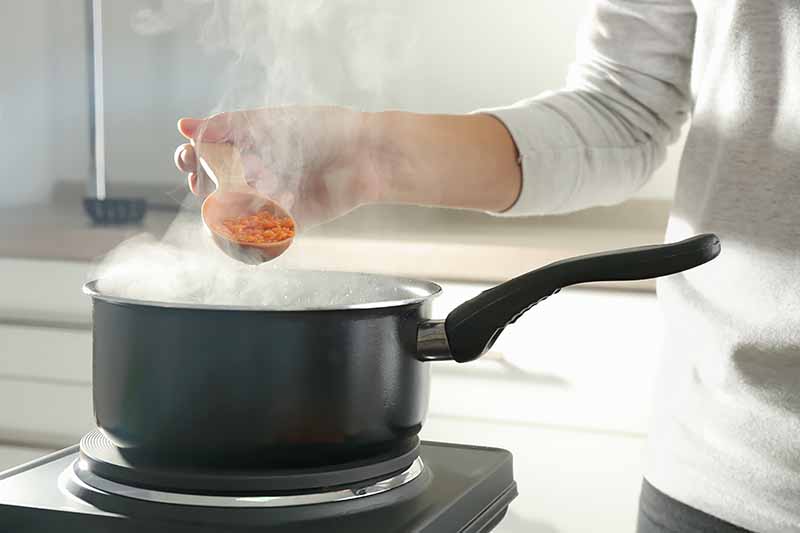
Many people make the mistake of turning the burner on high, assuming that the higher temperature will cook the food faster.
While this may be true of thin soups, broth, water, and other liquids, you’ll need to be more mindful with thicker soups, stews, and sauces.
They may potentially stick onto the cooking vessel and burn if they are heated and kept at high heat, and not stirred appropriately throughout cooking.
This food on the bottom can be difficult to remove from the cook surface, with the removal process sometimes damaging the pan.
3. Use the Right Tools for Stirring
Whether you are using spoons, spatulas, or whisks, the material of your stirring utensil is an important consideration!
Metal utensils can be tough on the surface, potentially scratching various coatings.
We advise against using metal utensils on coated saucepans, such as porcelain-coated cast iron or nonstick cookware, since these will quickly ruin the protective finish.
To play it safe, especially if you are unsure of what exactly your own cookware is made of, you may opt to completely avoid using metal utensils all together!
So, what do we suggest instead?
Made In Wooden Spoon, available from Made In
Wood, silicone, and hard plastic utensils are the best options to use on all types of saucepans, and you can rest assured that all of these styles will not harm your cookware.
For the ultimate wooden utensil that is strong and sturdy, beautifully styled, and won’t scratch your equipment, consider Made In’s Wooden Spoon, constructed with 100% beechwood. Check it out now on Made In’s website.
Cuisinart 7-Piece Assorted Kitchen Utensil Set, available from Wayfair
If you’re looking for a set of multiple utensils, you’ll like the Cuisinart 7-Piece Assorted Kitchen Utensil Set, with nylon tool heads that are safe to use on different finishes. Purchase it from Wayfair or Amazon now.
4. Clean According to Material
With the exception of cast iron, which you can review in our article, all styles can simply be hand washed with a non-abrasive sponge and warm, sudsy water.
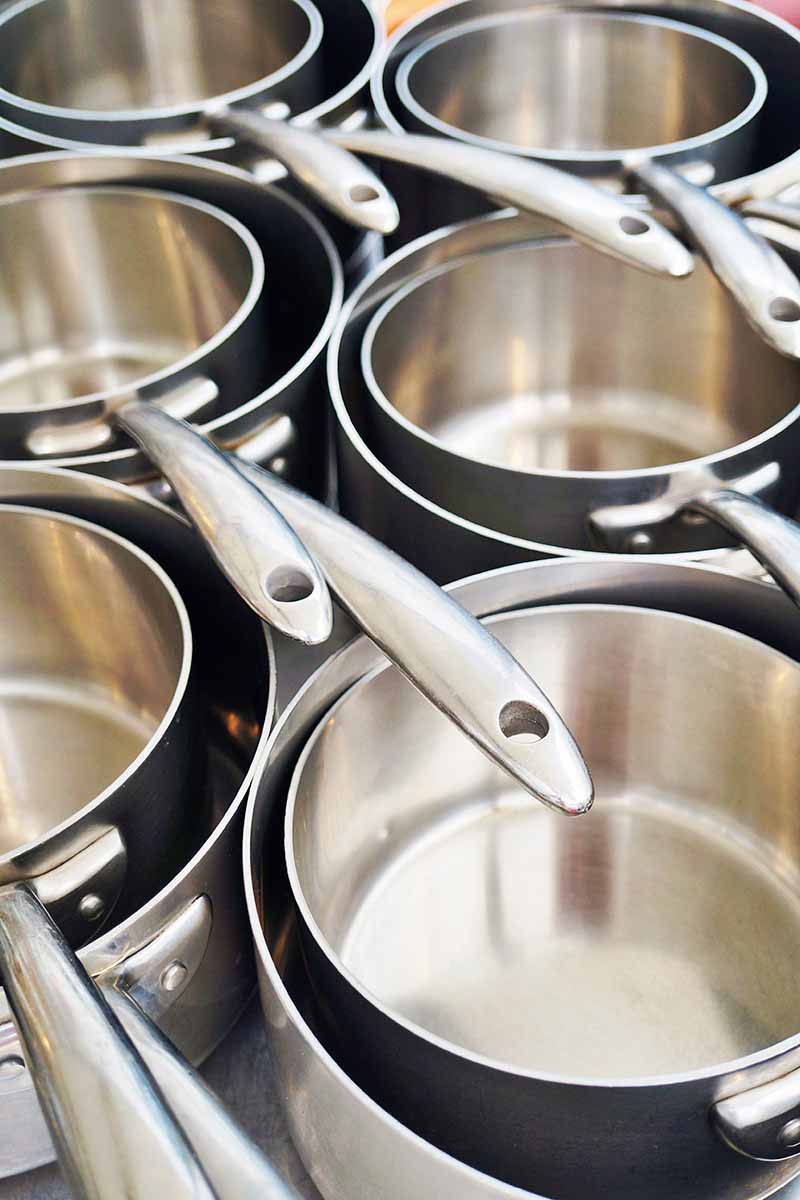
To keep this particular piece of cookware looking new and in its best condition, we don’t suggest washing it in the dishwasher. Dishwashers may discolor copper and aluminum, rust cast iron, and leave water spots on stainless steel.
Some brands and manufacturers may provide additional instructions for keeping specialty pieces of cookware looking like new, so we really do recommend that you review your own specific saucepan’s cleaning and care instructions for optimal maintenance.
However, there are still some general guidelines you can follow with certain materials. Let’s take a look.
Cast Iron or Carbon Steel
While there are many opinions for cleaning cast iron or carbon steel, a rule we strongly stand by for maintaining this type of kitchenware is to properly season it – and to do so often!
This involves pre-seasoning before its first use, and routinely seasoning after cooking with it.
For a more thorough explanation on this important maintenance practice, read our article on how to clean and care for your cast iron and carbon steel pans.
Cast iron that is coated with enamel or porcelain does not require as thorough of a cleaning process, but it should still be treated carefully by handwashing with warm, soapy water.
Copper
First, determine if your copper cookware is lacquered, meaning it has a protective coating to prevent surface damage and tarnishing.
The main rule, for both lacquered and unfinished copper, is to avoid using any materials that are too abrasive, like steel wool.
Bar Keepers Friend Powdered Cleanser, 2-Pack, available on Amazon
If it is lacquered, the cleaning process will be simpler compared to unfinished copper. Just clean with warm water and mild soap with a soft cloth or sponge.
You will need to employ a few extra steps to maintain unfinished copper:
When unfinished copper cookware is exposed to water and air, after a period of time, the surface may tarnish and discolor.
To maintain copper’s natural shine, you will need to routinely use a non-abrasive cleaner specifically designed for polishing copper materials.
You can use a commercial cleanser and polish, such as Bar Keepers Friend, for normal polishing tasks. It is available to purchase on Amazon.
There are also natural cleaning methods available to you, such as using a combination of vinegar or lemon and salt. For further reading on different cleaning methods, be sure to review our article on cleaning and caring for copper cookware.
Nonstick
Your favorite nonstick saucepan should be cleaned by hand with warm, soapy water using a gentle dish detergent.
And don’t you dare go anywhere near that abrasive scouring pad!
Always use a soft washcloth when cleaning your nonstick cookware to avoid scratching the protective coating.
When storing nonstick kitchenware, always remember to use pan protectors between each one!
Sur La Table’s set of three flexible polyester felt protectors keep them safe when stacked in a cabinet or closet. Buy a set now from Sur la Table, in either gray or red.
Stainless Steel
Many stainless steel kitchenware items are advertised as being safe to clean in the dishwasher, but the material may lose its luster over time.
And if your pan has a handle made out of a different material, like plastic, it may warp or become brittle after multiple trips through the hot dishwasher.
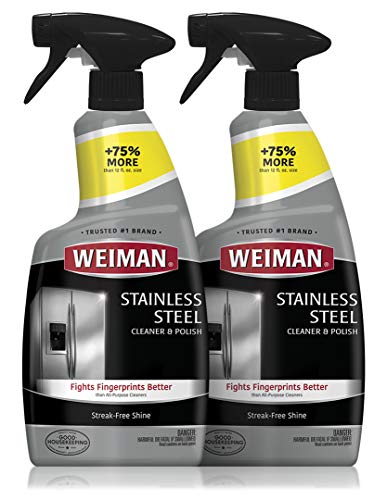
Weiman Stainless Steel Cleaner and Polish, 2-Pack, available on Amazon
For best results, always wash in warm, soapy water and thoroughly rinse.
A basic household ingredient like baking soda will help to remove any rust with a little buffing, going against the grain of the steel. Buffing will also remove any cloudy residue and watermarks.
There are also commercial products to consider using, like Weiman Stainless Steel Cleaner and Polish, available to purchase from Amazon.
For more helpful advice, review our seven tips and tricks for cleaning stainless steel in the kitchen. No more fingerprints!
5. Dry Immediately
While there may be differences in how to clean the specific material of your saucepan, there is one universal rule to always – and we mean always – follow carefully after cleaning any cookware:
Dry it immediately and thoroughly!
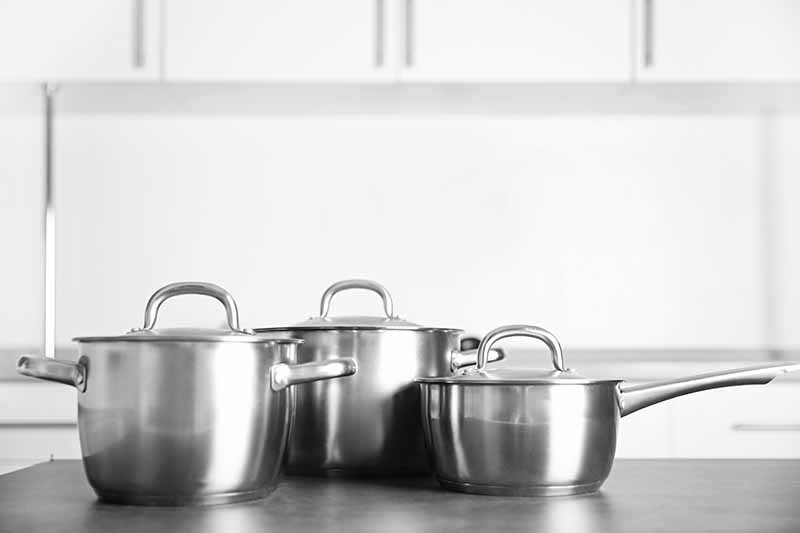
While it’s an easy and convenient move to set your freshly cleaned tool on your drying rack and run away to take care of other tasks and errands, that excess water will soon become your cookware’s worst enemy.
You may not notice a difference after the first few weeks, or even months, of drying this way. But repeat instances may eventually take a toll on your saucepan – leading to rust, watermarks, corrosion, and damage.
Take that necessary extra step to protect your precious pans by drying them completely soon after washing them.
Use a clean, dry kitchen towel to get the job done safely and well, and see if you can get another set of helping hands, like your partner, to assist you!
Save the Saucepan
By following these simple guidelines, you’ll be delighted to discover that a quality piece of cookware like your favorite saucepan will last for many years of use.
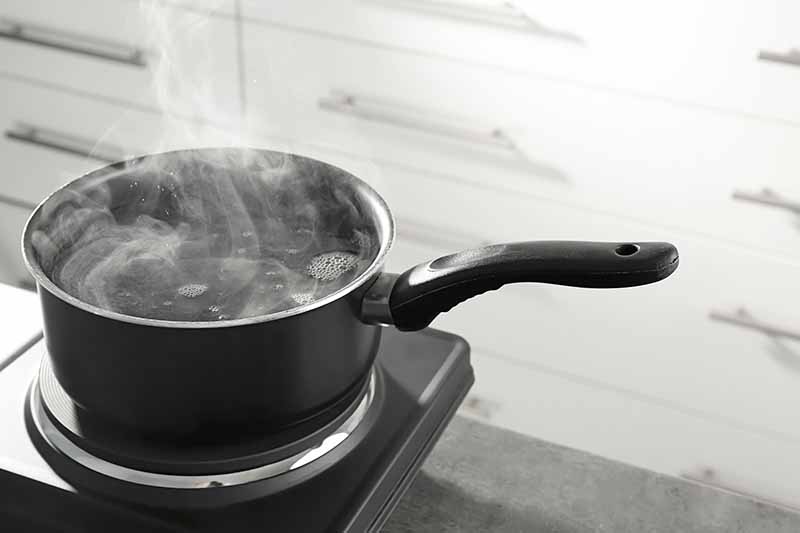
You’ll be able to make your favorite recipes for soups, stews, purees, sauces, and much more – and you won’t have any issues with caring and cleaning for it before, during, and after every use.
With easy actions like avoiding metal spoons, taming the heat when cooking thicker soups, and drying after cleaning, your saucepan will be treated so well.
And we love spoiling our cookware!
Do you have any of your own tips and tricks that you like to use when caring for this particular piece of equipment? The comment section is wide open – so let’s talk!
If you found this article informative and you’re interested in learning more, we will happily offer our expertise with other kitchen equipment! Start with these cookware guides and reviews:
© Ask the Experts, LLC. ALL RIGHTS RESERVED. See our TOS for more details. Uncredited photos via Shutterstock. Product photos provided by Sur La Table, Wayfair, Made In, and Amazon. Originally published on October 16, 2014. Last updated on June 27, 2023.
About Nikki Cervone
Nikki Cervone is an ACS Certified Cheese Professional and cheesemonger living in Pittsburgh. Nikki holds an AAS in baking/pastry from Westmoreland County Community College, a BA in Communications from Duquesne University, and an MLA in Gastronomy from Boston University. When she's not nibbling on her favorite cheeses or testing a batch of cupcakes, Nikki enjoys a healthy dose of yoga, wine, hiking, singing in the shower, and chocolate. Lots of chocolate.

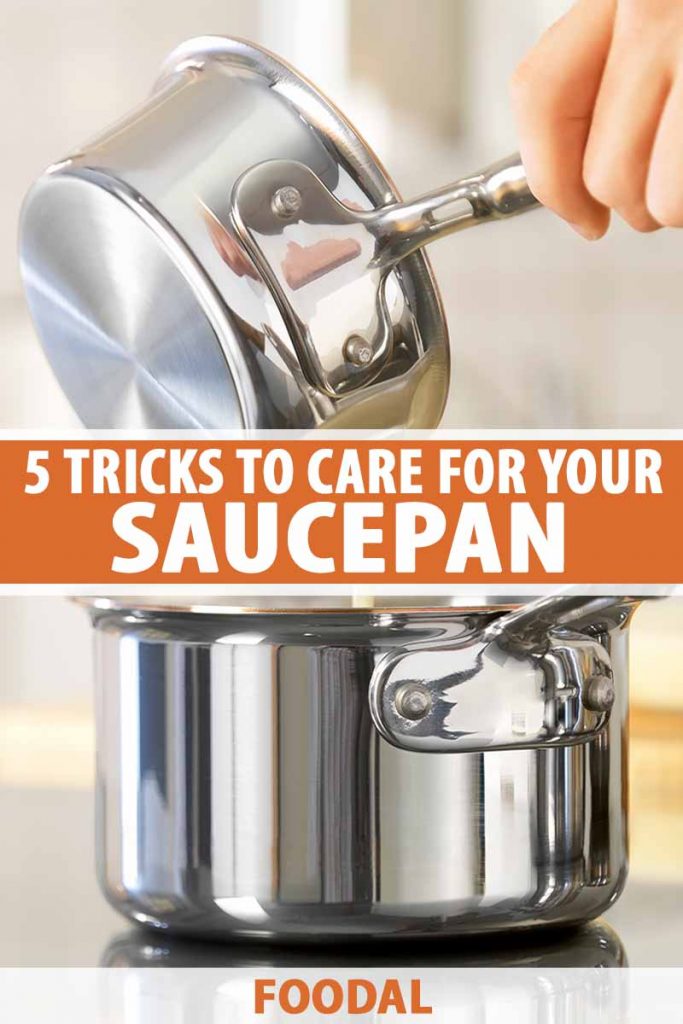
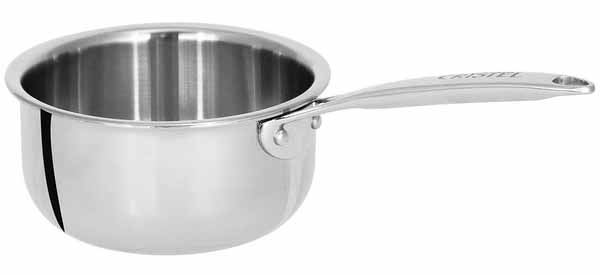
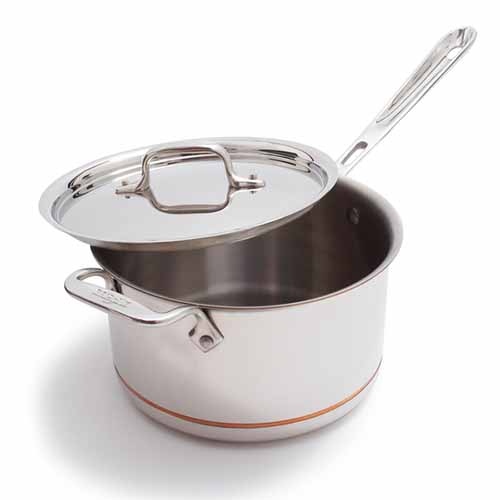
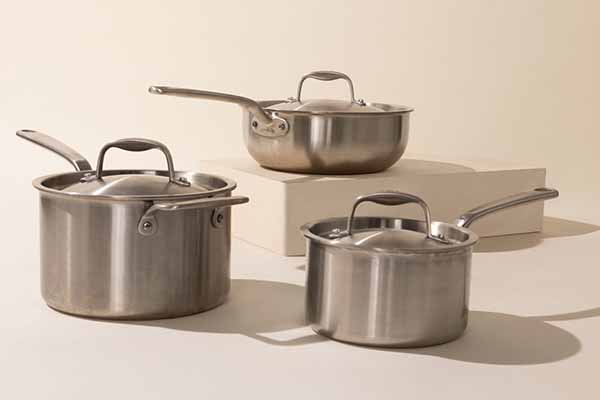
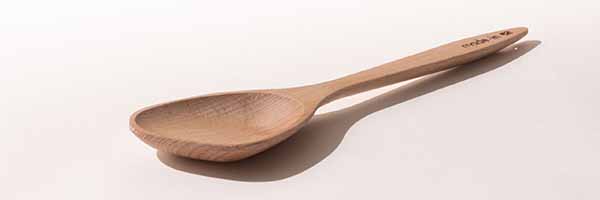
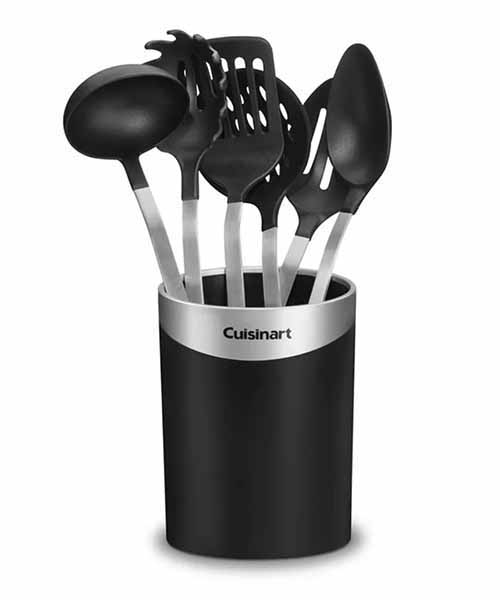
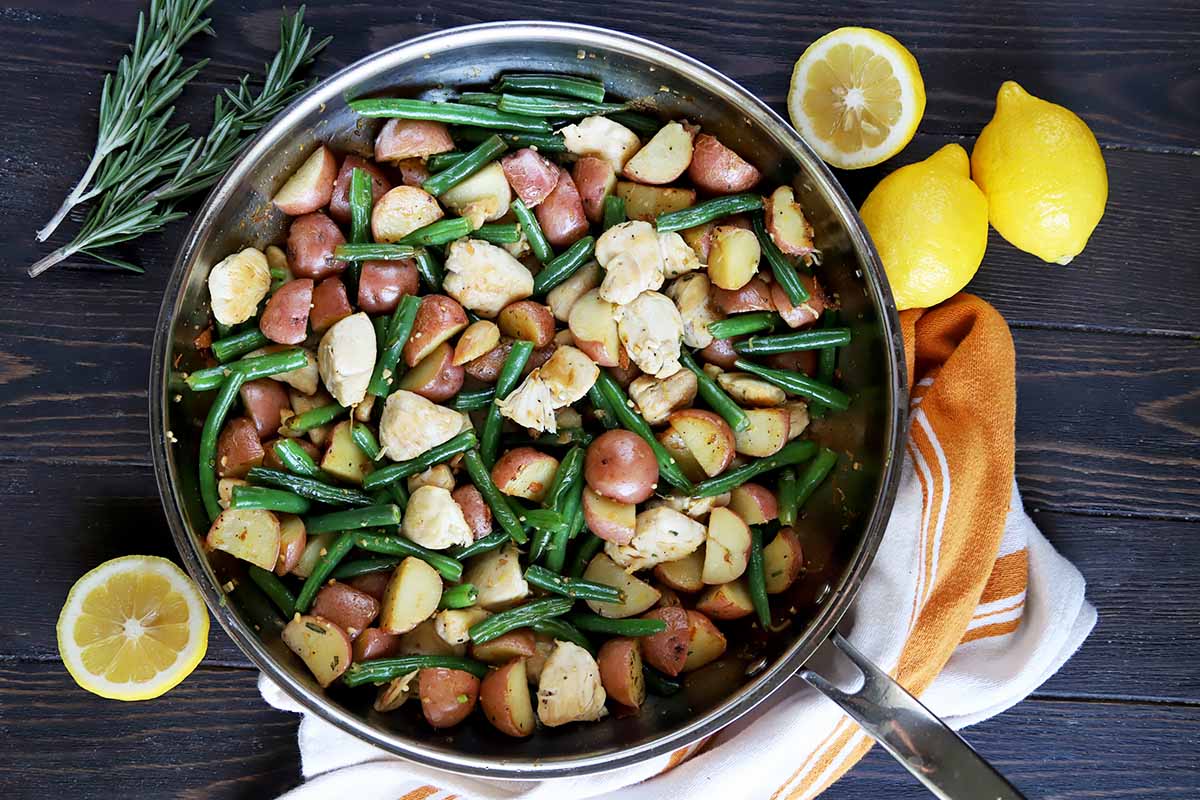
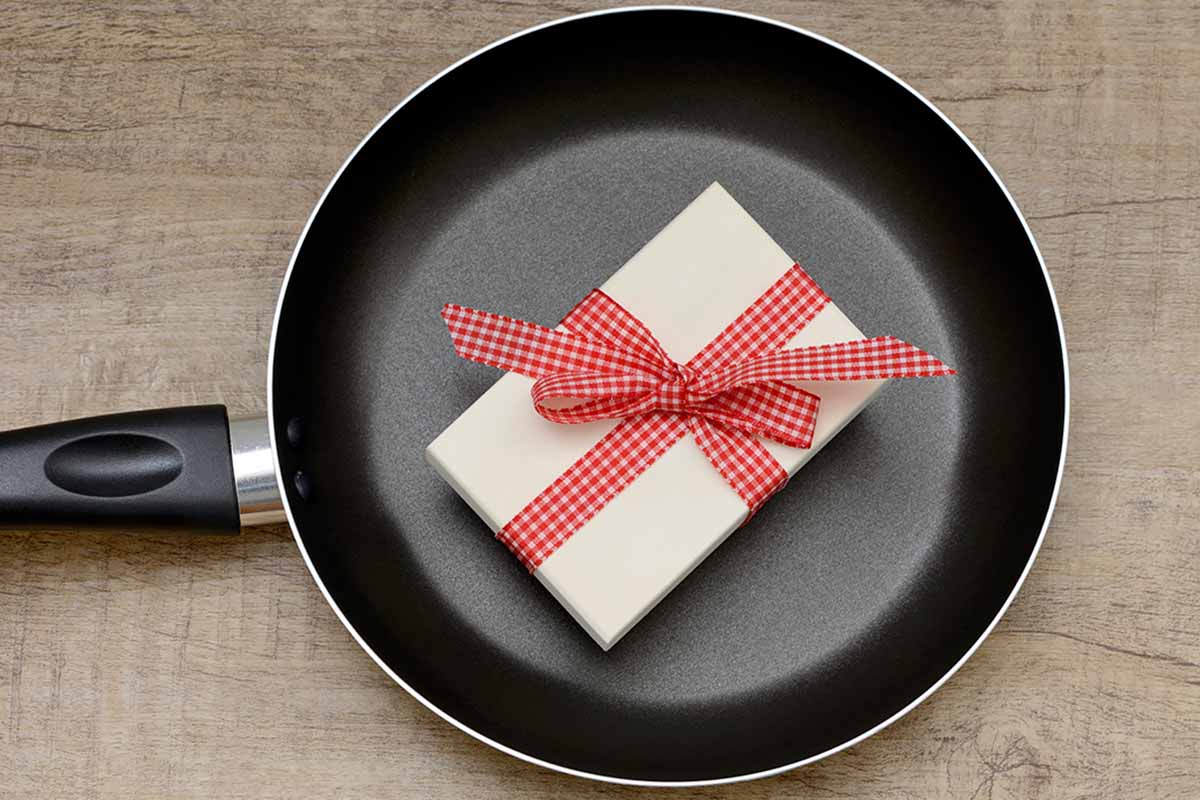
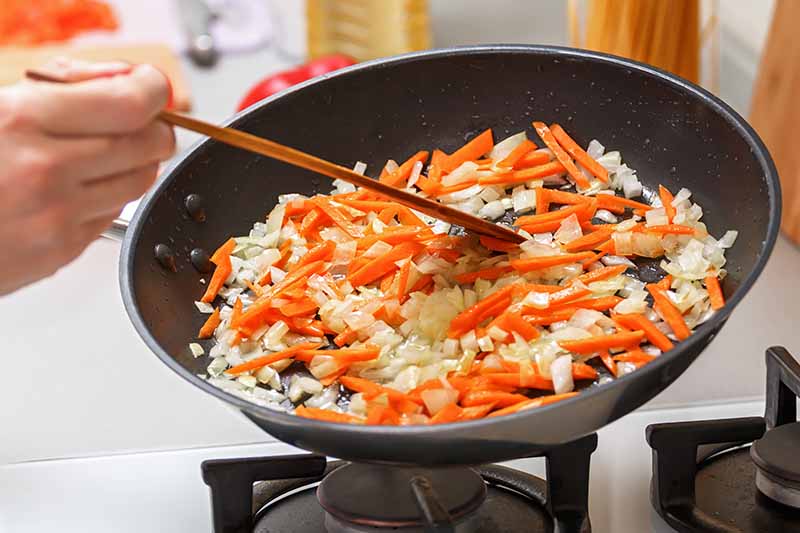
I am usually too lazy to hand-wash my saucepans, I greatly prefer the convenience of using a dishwasher. Now that I know this damages my saucepan over time, I will probably try and take better care of my saucepans!
A tip I’ve heard is to wash your utensils whenever you’re finished using them, so that you won’t see a giant pile of dirty dishes to handle at the end of cooking and lose all motivation. I will probably try and use this tip to trick myself into hand-washing saucepans!
It seems like I go through more saucepans than I should – maybe this will help me keep them around for longer. Thanks!
Now that I’m an adult, I understand why my mother always got so mad when my sister, my father, and I wouldn’t watch what we were doing with her saucepans. She always did what she could to keep them in really great condition and none of us paid any attention. She had quite a few non-stick ones that we ended up ruining because we wouldn’t use a wooden spoon like we should have. My dad would stick a fork in to stir things and they would get scratched up.
This is a list of tips I’ll have to keep close by. I look for good cookware when I can, but my boyfriend doesn’t paid attention. Maybe he’ll learn something.
I am so glad I’ve followed these tips! My saucepans are in great shape. I wouldn’t mind a new set, though 🙂 Do you have any suggestions for a new brand? I love getting new cookware.
The biggest mistake I make with all my saucepans is to cook them on too high of a temperature. My saucepans always end up burning and I end up tossing them out every few months.
I used to do that sometimes as well. I can’t remember how many pans I ruined before my mother told met that I was ruining them due to the heat. I thought it was only me that had this problem. I bought a few pans from the thrift store that I can use when I want to cook something quicker. I don’t have to worry about ruining my good pans.
I’m guilty of using the wrong saucepan on the wrong burner, but now that I know the damage it can do, I won’t do it anymore. I always use wood or silicone utensils with all of my pots and pans, and I actually prefer to wash my pots and pans in the sink for some reason. I feel like I can clean them better than the dishwasher.
It seema as though at least several of these rules are disreguardrd at my house daily. My husband does not seem to understand why he cannot use metal utensils in my sauce pans. I just bought a brand new set of “Kitchen Aid” pans about a year ago and I am pretty sure they are all warped. He may have paid for them but I guess he does not understand their true value. It is quite a shame!
Since I started buying better pans and skillets I’ve taken more care of how I clean and store them. I usually buy Nordic Ware skillets as they are made in the USA. I hand wash all of those with special non-stick coatings. I use the dishwasher for just about everything that’s not non-stick. My cast iron skillets are a completely different animal!
Thanks for the cleaning tips for the saucepans. I have to admit that I use my old ones from years ago and probably need to buy some new ones. But, as long as they work and we still have the lids I’m hard pressed to rush out to buy expensive ones. That’s different than my skillets. I’m constantly retiring skillets for some reason. I donate them or pass them onto the kids for their new kitchens.
I’m pretty good in taking care of my pots and pans, but I could do a lot better. Something that you mentioned here is key which is using the right utensils, I really need to go to the dollar store and get some plastic utensils to use in some of my pots and pans. Hopefully the dollar store utensils will be good enough, anything seems better than what I currently do sometimes, which is use metal utensils.
I also like the idea about putting baking soda in a pan and heating it on the stove. I have a large Magnalite skillet that is in desperate need of some attention to get it clean. Perhaps the baking soda will do the trick.
I love washing my utensils and the whole nine yards but if we are going down that trail of cleaning and polishing the same sauce-pan i just washed a minute ago,…. kindly let me catch a breath and somehow get a little bit siesta…i’ll need all the energy i can muster and courage to face my friends who will ask me if i have OCD {Obsessive Complusive Disorder}…considering am a bit of a neat freak {humble-brag abit}…but am in awe…i had no idea that there are products to actually polish saucepans…i confess, i was in the dark, but by jolly the light has been switched on.
Silicone utensils are fantastic and can be used with any pan. Whilst I am a fan of wooden spoons, I find they can stain easily and they take an age to dry. Silicone seems more hygienic to me.
I’m guilty of using metal implements in my pots and pans, even though I know it’s not good for them. Slowly, but surely, I’m retraining my brain to not do so, since I don’t want to have to replace my cookware. It’s good to know the tip about reheating the pan with water and baking soda, since I always have that on hand and readily available. I don’t use my dishwasher, so thankfully, that’s one less thing to worry about. Thanks for the great tips!
Thanks for the tips. I’ve unfortunately ruined some non stick pans by using metal utensils on them. I heard that once the pan is scraped it car release toxins into the food cooked in it. I bought silicone utensils after damaging my first pan and haven’t had an issue since.
My mom is extremely delicate when it comes to her pans! and I thought that she just was exaggerating, but I can definitely see why, especially with the tip of using only wooden spoons, I have ruined a lot of pans because I used to cook with only metal spoons, after reading this article I have definitely learned the lesson.
It sure was nice when you said that you should use warm soapy water in cleaning aluminum cookware to make sure that they won’t be damaged easily. My husband and I are planning to shop for bakery pans. We’d like to make sure that these bakery pans are going to be kept in good condition for years to come because we’d like our children to be able to use them when they learn to cook. Thanks!